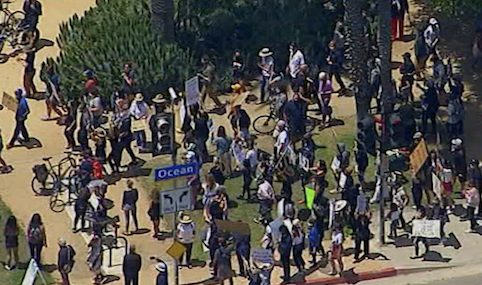On the Ground

Stanford Center for Racial Justice’s On the Ground series seeks to tell stories about change and reform from everyday people mobilized on the ground through community activism, nonprofit service, grassroots political advocacy, and new, innovative methods of justice seeking. On the Ground will highlight individuals and groups doing the often unglamorous, daily work in communities to make them safer, stronger, and more equitable—and shine a light on why, even with energy, intention, and ambition, progress can be hard to achieve.
Further, our series aspires to connect threads and movements across the country to show how big and small communities with overlapping problems can be similarly stalled, or, in some cases, experience important breakthroughs. The evolving multimedia series will also attempt to explain why embedded social, psychological, political, and structural behaviors motivate much of what keeps progress at bay—and, in turn, the on the ground fight alive and necessary.
If you have any questions/comments, or would like to let us know about your own reform story, please email us at scrj@law.stanford.edu.
Why Can't Police Reform Succeed in Santa Monica?
Amid mass protests following the murder of George Floyd in May 2020, Santa Monica, California faced its own tipping point when police mishandled multiple disruptive events in the city. More than two years later, those events are an ongoing source of division—and frustrated Santa Monica residents are still seeking critical answers.
In this On the Ground case study, the Stanford Center for Racial Justice examines how the city’s move toward embracing civilian oversight and police reform started with promise, only to be met with immediate, intentional resistance. Even with well-meaning community members pushing for trust and accountability, why has reform been so difficult nationwide? And if Santa Monica cannot implement civilian oversight, then is it incorrect to label it a progressive city committed to racial justice? Watch our video below.
Look Back: The 2020 Reform Effort
After Santa Monica leadership embraced a series of recommendations to improve public safety, including civilian oversight of policing and a review of the police department's use of force policies, resistance kicked in immediately.
Read MoreRacism, both generally and structurally, is often an impediment to genuine police reform. While Santa Monicans should be able to agree on some of the fundamental goals for public safety, several factors contribute to the regular undermining of efforts for input and oversight.
Read MoreIn the final installment of his retrospective, SCRJ Executive Director George Brown offers thoughts on how Santa Monica (and other cities) might move forward to achieve fair, safe, and equitable public safety policy.
Read MoreCommunity Q&As
Santa Monica residents reflect on the events of May 2020 and the subsequent challenges for police reform and oversight in the city.









